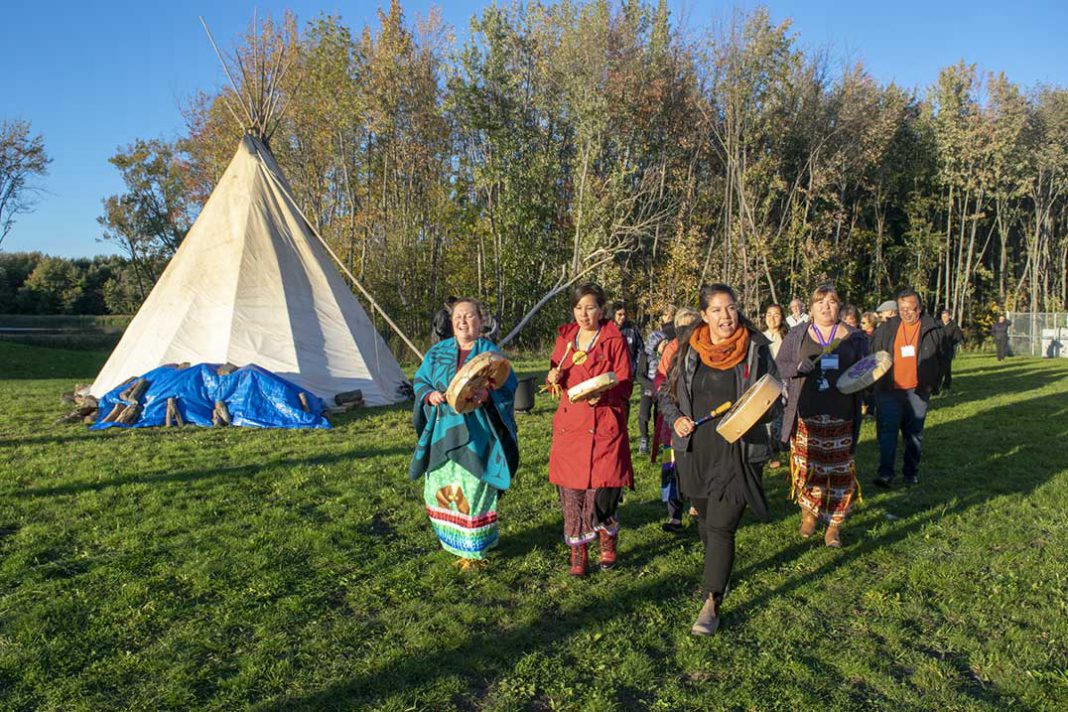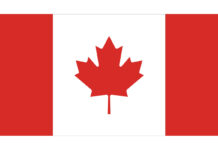AUNDECK OMNI KANING—Earlier this month, community members and concerned allies converged upon the Four Directions Complex in Aundeck Omni Kaning (AOK) to commemorate Mnidoo Mnising Missing Persons Awareness Day, a day to spread information and inspire action towards Canada’s Missing and Murdered Indigenous Women, Girls, Boys and Men (MMIWGBM).
The morning’s events began with a warning that there would be sensitive topics discussed throughout the day and elders were available for counselling if anyone needed support.
Elder Joe Laford of Sheshegwaning opened the ceremony as Elder Roberta Oshkabewisens performed a pipe ceremony. The room was treated to a welcome song by Ashley Keays of Pic River First Nation.
AOK Ogimaa Patsy Corbiere addressed the room.
“We’ve had a lot of issues with people going to cities where they have faced human trafficking and death,” she said. “Community members never give up hope.”
She also criticized the cost of an inquiry into missing and murdered Indigenous people rather than investing to help on a community level.
“We already know the problems. There’s no jobs and bad housing,” she said. “We have a poverty problem and we need to address that.”
Following her opening remarks, Wayne Trudeau took to the stage along with Elder Laford to share his personal story of loss. Elder Laford was present to support Mr. Trudeau as he shared his story.
Mr. Trudeau’s brother Sean went missing in 2001 on a trip to Montreal with his friends. Two weeks had passed, and Island police services still had no information about his whereabouts. A seer approached Mr. Trudeau and shared what she believed happened to his brother. Armed with the new information, Mr. Trudeau contacted local police again who told him the information was not enough on which to act.
“So I said, ‘I am. I’m going to act on it. That means I’m going to Montreal.’ And so the journey began,” said Mr. Trudeau.
He said when he arrived at the police station in Montreal, the detective in charge of the case said he had checked the bar where Sean was last seen, their hotel and ATM surveillance footage but had no leads.
Mr. Trudeau went to speak with the bar owner in person who allegedly told him he was not aware of any police presence who had spoken with any of his staff. The further he investigated, the more troubled Mr. Trudeau said he became.
He said he spoke with local patrol officers who were not aware of his brother’s disappearance. Mr. Trudeau said he looked further and allegedly could not find any missing person report for his brother.
Eventually, after creating posters and searching around the city tirelessly, police told him there was a body in the morgue that had been found in the river.
“We knew right away it was him,” said Mr. Trudeau. “We were told he would have been incinerated if we had gotten there any later.”
He was able to positively identify his brother and get a small sense of closure to the incident. The original detective called the death a suicide, but Mr. Trudeau said the seer described his death as murder stemming from a robbery gone wrong.
Another of his brothers went missing for 10 days in Killarney in 1994. Mr. Trudeau said he had to conduct his own search that time too.
“The system had given up or done little and we took these matters into our own hands,” he said.
Mr. Trudeau said spiritual help guided him through the adversity.
“In these desperate times like what happened, your spirit takes over and the physical doesn’t matter anymore. It was very spiritual,” he said in an interview, describing seeing the Seven Grandfathers on a mountaintop as he drove towards Montreal.
“I’m speaking today for many families out there who did not take the same action as me and were counting on the system,” he said.
I’m honoured to be part of this. It’s all about healing,” said Mr. Trudeau. “This was a very healing experience for me.”
Following Mr. Trudeau’s talk, Shelly Tuck of the OPP Missing Person Unit addressed the room.
“Thank you, Wayne, for sharing your story because that’s why we’re here,” she began.
“We’re here because of missing and murdered loved ones in this community and throughout Ontario. We shouldn’t have to gather to talk about MMIWGBM.”
She shared some statistics, including that as of September 24 there were 7,900 missing persons in Canada, with 1,751 of those being in Ontario. There were also 228 unidentified deceased persons in Ontario as of the same date.
Ms. Tuck acknowledged the bad relationships Indigenous persons have often had with police as well as the confusion over what jurisdiction should be contacted to report a missing person.
Two key points Ms. Tuck addressed were the shared database between the coroner and police services in Ontario and Canada. She said each party has access to the database for researching missing persons reports.
She also made it clear that there was no time limit — minimum or maximum — to report a missing person. It could be as little as a few hours or, in one instance she described, a 35-year-old cold case.
“Twenty-four hours is a really, really long time when someone goes missing,” she said, referencing the popular misconception about having to wait 24 hours before reporting a missing person.
Following her presentation, Ms. Tuck fielded audience questions and elaborated on the services the OPP Missing Persons Unit provides. She encouraged family and community members to report missing persons as soon as any suspicions arise.
“You are not wasting our time, ever,” she said.
Next up was Lindsey Lobb from the Canadian Centre for Child Protection (CCCP). She explained the services her organization provides including custom websites for every missing child that can easily be shared.
“That drives people back to a single point of contact and we can update the information in real-time,” said Ms. Lobb.
CCCP also acts as a bridge between families and police, especially when new investigators join the team. This saves families from having to re-explain the situation which can cause additional trauma.
For high-profile cases, CCCP can coordinate media requests and ensure the family is not overwhelmed with hosting interviews and press conferences.
CCCP has a community action plan based on working with Norway House Cree Nation in Northern Manitoba. The plan identifies community members who can offer support such as vehicle access or food prep.
“We can’t do what we do without our connections in the communities,” said Ms. Lobb.
In the afternoon, participants separated into breakout sessions on topics including the National Missing Persons DNA Program, preventing child sexual abuse, living with grief, cybersafety and indicators of human trafficking.
Following the evening feast, the remaining attendees gathered outside in a circle next to the tipi containing the sacred fire. Ms. Keays once again led the song. The group then walked around the Four Directions Complex to a travelling song and ended at an outside display of MMIWGBM on the ballfield fence.
Everyone gathered by the display smudged and was invited to make a tobacco offering into the sacred fire.
The vigil was a display of contrasts. Community members stood next to the display of their friends and relatives, quietly mourning their losses as the sky began to fill with the brilliant colours of an early autumn sunset. Children buzzed around the adjacent play structures, their laughter standing out in stark contrast to the muffled sobs from their older relatives.
As darkness crept ever closer, the vigil was drawn to a close and attendees parted ways. The day’s events had concluded but their work to help MMIWGBM across the country had a long way yet to go.






